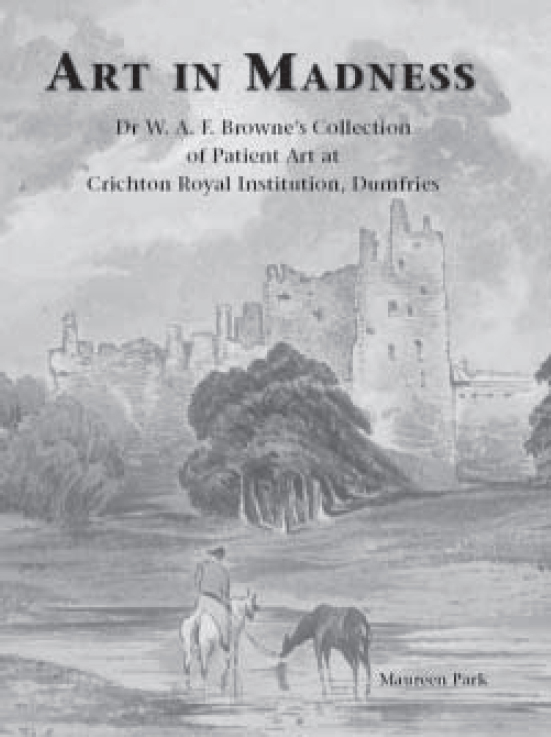
In July 1838 – a few days after Queen Victoria’s coronation – Dr William A. F. Browne took up his appointment as superintendent of the Crichton Royal Institution at Dumfries. He had recommended himself for the post by his influential lectures on asylum management, which outlined his general approach of ‘moral treatment’ – the secret, he explained, lay in kindness and occupation. As the first patients arrived at Crichton, they found themselves caught up in a whirlwind of activity, including work programmes, educational events, a library and museum, a regular periodical, concerts and theatricals, and outings to places of interest in south-west Scotland and further afield.
However, there was a darker side to asylum life. Within a short space of time, Browne was expressing frustration with the rates of remission and cure. His own health was becoming compromised and, in this book, Maureen Park points to the unusual circumstance of Browne and his wife raising their own family under the scrutinising gaze of the patients among whom they had come to live. In the early 1840s, Browne began to make systematic records of his patients’ dreams and engaged an ‘art instructor’ for patients who had been ‘prescribed’ art as part of their treatment.
Why did he do it? Dr Park is an art historian based at Glasgow University and she records how, in 1983, Crichton archivist Morag Williams came upon Browne’s original collection of patient art, bound into a leather volume. This collection, amounting to about 140 paintings, forms the central portion of this book. It is superbly reproduced and catalogued, and presented with notes on the patient-artists. Park has spent years with this material, and her scholarship, always meticulous, is never oppressive. In addition to this, Park provides an introduction with a biographical essay on Browne, a general survey of early asylum art, a fascinating account of life in the Crichton, and a note on Browne’s own writing on outsider art.
Some of the illustrated artwork is rather formulaic in character, but several patients – like the clergyman Joseph Askew and engraver William Bartholemew – developed authentic personal visions. Dr Park’s achievement with this book has a revelatory aspect. Browne’s public views on patient art, she shows, had a conventional ring to them, but he was a most unconventional man. Dr Park presents a sustained meditation on the role of art in life and hundreds of glimpses of the heady days of the early asylum movement. This is a profound contribution to psychiatric history from a most unusual and illuminating perspective.





eLetters
No eLetters have been published for this article.